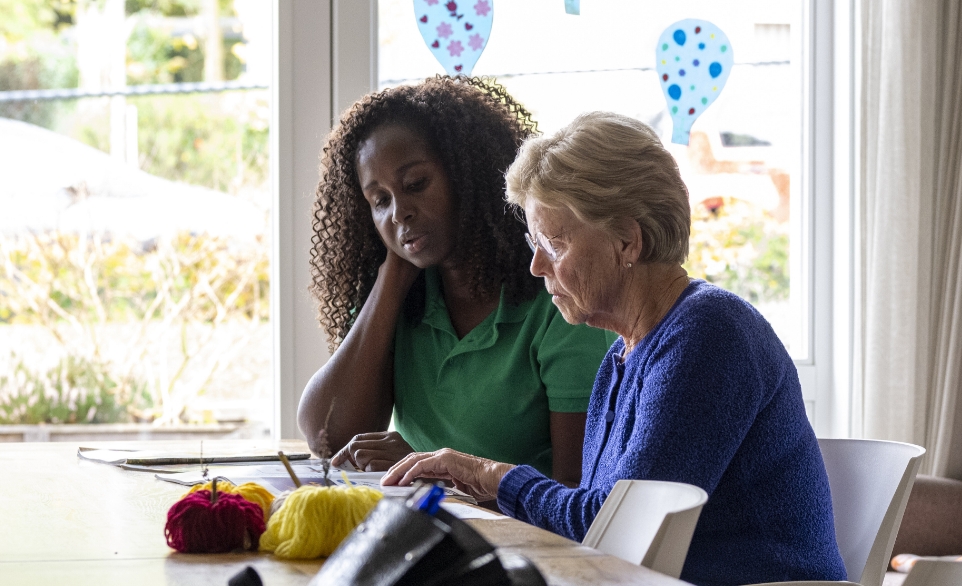
Because real care starts with the person — not the task list.
In the world of care, you hear the term “person-centred care” a lot.
It shows up in training sessions, CQC reports, and policy handbooks.
But what does it really mean?
At its core, person-centred care is simple:
Put the client at the heart of everything you do.
Not just in theory. Not just when it’s easy. But every shift, every decision, every interaction.
At Carer Academy by Big Sister, we believe person-centred care isn’t just a model — it’s a mindset. And when you get it right, it transforms the way clients feel, and the way you feel about your role too.
In this blog, we’ll break down what person-centred care really looks like, why it matters, and how to consistently deliver it — even when the day gets busy.
What Is Person-Centred Care?
Person-centred care means treating every individual as a whole person, not just a patient or a list of tasks.
It means:
- Listening to what matters to them
- Respecting their values, choices, and preferences
- Involving them in decisions
- Seeing beyond their condition to who they are as a person
It’s not about doing everything they ask.
It’s about working with them, not just for them.
Why Person-Centred Care Matters
When care is person-centred, clients feel:
- More in control
- More respected
- More connected to those supporting them
- Less anxious or helpless
- Genuinely cared for — not just managed
And for carers, person-centred care leads to:
- Deeper relationships
- Greater job satisfaction
- Fewer complaints and misunderstandings
- Better feedback from clients and families
- Stronger CQC ratings for your service
Person-centred care is good for clients — and good for you too.
-
Know the Person, Not Just the Plan
Care plans are important — but they’re just a starting point.
Outstanding carers go beyond the paperwork and ask:
- What makes this person feel safe?
- What are their routines, habits, and rituals?
- What are their fears, hopes, and memories?
- How do they like their tea? What music makes them smile?
Ask questions like:
- “Is there anything you’d like done differently today?”
- “What matters most to you this week?”
- “How can I make this a bit easier for you?”
These small moments of interest build trust and comfort.
-
Make Space for Choice (Even in the Little Things)
You might not always be able to offer big choices — but even small ones matter.
Offer options where possible:
- “Would you like to shower now or after breakfast?”
- “Which jumper do you feel like wearing today?”
- “Do you want the curtains open or closed?”
Choice creates dignity. It reminds the client: You’re in control of your life — not just being looked after.
-
Adapt the Routine to Fit the Person — Not the Other Way Around
Person-centred care means being flexible, not forcing someone into a routine that doesn’t suit them.
For example:
- If someone prefers a bath in the evening, adjust the rota if possible
- If someone doesn’t eat breakfast until 10am, don’t push toast at 7am
- If someone likes to pray before bed, make time for it
When clients feel their preferences are honoured, they feel more respected and safe.
-
Communicate With Warmth and Empathy
How you talk to someone matters just as much as what you do for them.
Use:
- Their name
- A calm, gentle tone
- Language they understand — no jargon
- Reassurance if they’re confused or worried
And always check understanding:
“Does that sound OK to you?”
“Would you like me to explain that again?”
Treat every interaction as a conversation — not a transaction.
-
Involve Clients in Their Own Care
Person-centred care isn’t something you do to someone. It’s something you do with them.
That means:
- Explaining what’s happening and why
- Asking for consent — every time
- Encouraging clients to do what they can do
- Listening when they say they want to try something new
When clients are part of the process, they feel valued and empowered, not passive or dependent.
-
See Behaviour as Communication
Sometimes clients can’t tell you how they feel — so they show it in other ways:
- Refusing help
- Becoming agitated
- Withdrawing or going silent
- Repeating questions or actions
Instead of seeing it as “challenging behaviour,” ask:
“What might this person be trying to express?”
Are they scared? Uncomfortable? In pain? Confused?
Compassionate carers look beyond the behaviour and seek to understand the cause.
-
Keep Learning and Reflecting
No one’s perfect — and person-centred care requires constant reflection.
Ask yourself:
- “Did I really put the client first today?”
- “Did I rush anyone or make decisions without asking?”
- “How could I make this experience better next time?”
Use tools from the Carer Academy to build your reflection skills — we’re here to help you keep growing.
Final Thought: Person-Centred Care Is a Daily Choice
Being task-focused is easy — especially when time is tight.
But being person-centred?
That takes thought, care, and a conscious decision to slow down and see the human in front of you.
At Carer Academy, we believe every carer has the ability to put the client first — not just in theory, but in real ways every day:
- By asking one more question
- By listening a little longer
- By remembering that this is someone’s home, someone’s life — not just another call on the rota
Want to build your person-centred care confidence?
Visit the Carer Academy section of the Big Sister website for hands-on tools, training sessions, and reflection guides to help you bring person-centred care to life — consistently and confidently.
Because when you put the client first, everything else falls into place.













